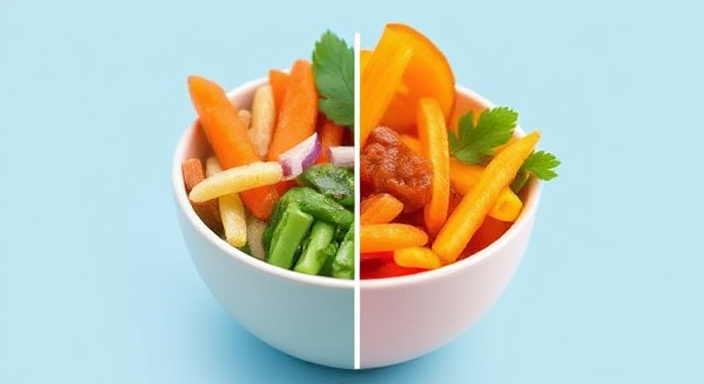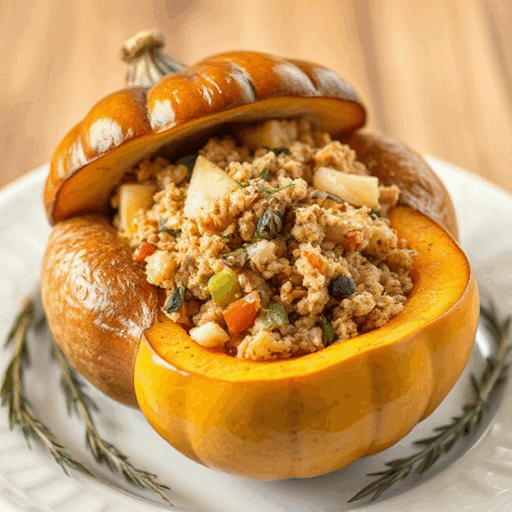What are the Collagen-rich foods?
Collagen is a body-produced fibrillar protein that gives elasticity and…

Food is more than just nourishment—it’s a tool that can harmonize your body with its environment, improve digestion, and provide comfort and healing. From the cooling effects of a crisp salad in the summer to the soothing warmth of a hearty soup in winter, cold and warm foods play unique and important roles in supporting your health.
Today, I want to take you deeper into how cold and warm foods affect your body, why they are essential during different seasons and situations, and how you can make intentional choices to feel your absolute best.
Cold Foods: Refresh, Cool, and Energize
Cold foods are incredibly refreshing, particularly when the weather is hot, or your body feels overheated. Think about the way you crave an icy smoothie or a crisp, chilled fruit salad on a sweltering summer day. This is not just a matter of preference—cold foods help cool the body internally and bring a sense of immediate relief.
1. Refreshes the Body in Hot Weather
When temperatures rise, your body works harder to regulate its internal temperature, leaving you feeling drained, overheated, and sluggish. Cold foods—like watermelon, cucumbers, and chilled yogurt—can help you cool down quickly. These foods contain high water content, which hydrates the body and lowers internal heat.
For example, watermelon is over 90% water and naturally cooling, making it the perfect choice for staying hydrated and refreshed. It replenishes lost electrolytes while providing essential vitamins like A and C to support your skin and immunity during heat exposure.
Adding cold foods to your diet during hot weather helps you maintain balance, feel energized, and avoid heat-related fatigue.
2. Can Slow Digestion, Requiring More Energy to Break Down
While cold foods provide a refreshing boost, they also require your body to work harder during digestion. Cold foods slow down the digestive process because your body needs to warm them to its core temperature before breaking them down efficiently. This process demands more energy, which is why cold foods can feel less satisfying or heavier on the stomach for some people.
For individuals with slower metabolism or sensitive digestive systems, an excessive intake of cold foods may lead to bloating, gas, or discomfort. This is why traditional health systems like Ayurveda often recommend balancing cold foods with warming spices or consuming them at specific times of the day—such as earlier in the morning or after exercise, when your metabolism is naturally higher.
3. Helps Reduce Internal Heat During Fever
When your body is fighting a fever, internal heat rises, leaving you feeling uncomfortable and drained. Cold foods, like ice chips, chilled broths, and fruit popsicles, can help regulate temperature and provide much-needed relief.
Cooling foods are also gentle on the digestive system during illness. When your appetite is low, foods like cold applesauce, smoothies, or yogurt can provide hydration, vitamins, and energy without overwhelming the body’s healing processes.
By incorporating cold foods during a fever, you can support the body’s cooling mechanisms and reduce inflammation, creating a more comfortable environment for recovery.
4. Provides Quick Energy for Workouts
Cold foods are ideal for pre- and post-workout meals because they provide quick energy and hydration. Smoothies, chilled protein shakes, and fresh fruits deliver easily digestible carbohydrates, electrolytes, and fluids that your body needs during intense physical activity.
For example, a chilled banana smoothie with almond milk provides potassium to replenish electrolytes, while its natural sugars give you an energy boost without weighing you down. Similarly, a cold bowl of overnight oats can provide slow-releasing carbohydrates to sustain energy throughout a workout.
Cold foods also help cool the body during and after exercise, preventing overheating and allowing for faster recovery.
Warm Foods: Nourish, Heal, and Comfort
Where cold foods cool the body, warm foods provide comfort, support digestion, and bring balance, especially during colder weather or illness. Warm foods carry a unique ability to nourish both body and soul, providing energy and care during times when you need it most.
1. Soothes the Stomach and Promotes Digestion
Warm foods are easier to digest because they require less energy for your body to break down. Foods like soups, stews, and herbal teas promote healthy digestion by stimulating the production of gastric juices and supporting the breakdown of nutrients.
When your digestive system is sluggish or irritated, warm foods can feel like a hug for your stomach. For example, sipping warm ginger tea after a meal helps soothe bloating, reduce nausea, and improve digestion. The warmth increases circulation to the digestive tract, allowing food to move smoothly through the system.
This is why warm foods are often recommended for those recovering from illness or experiencing digestive distress.
2. Increases Circulation to Improve Nutrient Absorption
Warm foods improve blood circulation, which is essential for nutrient absorption. As warm meals raise your body’s temperature, blood flow to the digestive organs increases, allowing nutrients to be broken down and absorbed more efficiently.
For example, a warm bowl of vegetable soup made with nutrient-dense ingredients like carrots, spinach, and lentils can deliver vitamins, minerals, and fiber while ensuring your body can extract these nutrients effectively.
By improving circulation, warm foods not only promote digestion but also enhance overall nutrient delivery, giving your body the energy and nourishment it craves.
3. Boosts Metabolism by Warming the Body
The warmth of food can help regulate your body temperature, particularly during cold weather. When your body temperature drops, your metabolism naturally slows down to conserve energy. Warm foods provide external heat that helps stimulate metabolism, allowing your body to burn calories more efficiently.
For instance, spicy warm foods like cinnamon or ginger tea increase thermogenesis, a process where your body generates heat by burning energy. This warming effect can give you a metabolism boost, helping you feel energized and balanced.
4. Comforts During Cold Weather or Illness
When you’re curled up on a cold winter night or feeling under the weather, nothing compares to the comfort of warm food. A nourishing bowl of chicken soup, a cup of herbal tea, or even a steaming bowl of oatmeal can provide emotional and physical warmth.
Warm foods work on a deeper level—they provide a sense of safety and calm that is deeply rooted in tradition and instinct. During illness, the warmth soothes inflammation in the throat, clears nasal congestion, and eases body aches, promoting faster recovery.
Additionally, warm foods are hydrating and gentle on the digestive system, making them ideal for anyone with a reduced appetite during sickness.
Finding Balance Between Cold and Warm Foods
Both cold and warm foods offer unique benefits, and finding the right balance is key to supporting your body’s needs. During hot summer months, cooling foods like salads, smoothies, and fruits can refresh and hydrate, while in winter, soups, teas, and hearty meals provide warmth and nourishment.
It’s also important to listen to your body. If you’re feeling overheated or recovering from a fever, cold foods can bring relief. On the other hand, if you’re experiencing digestive discomfort, stress, or fatigue, warm foods may be exactly what you need to restore balance and energy.
The Bottom Line: Food as a Tool for Balance
Food is a powerful tool for bringing balance to your body, mind, and environment. Cold foods offer refreshing energy, hydration, and relief during heat or illness, while warm foods provide comfort, improved digestion, and gentle nourishment when your body craves warmth.
By tuning in to the season, your energy levels, and your body’s signals, you can choose the right foods to help you feel your best. Whether it’s a cooling fruit salad or a cozy bowl of soup, each meal is an opportunity to align with what your body needs most.
Collagen is a body-produced fibrillar protein that gives elasticity and…
copyright © 2025 Anti-Inflammatory Approach. All rights reserved. Unauthorized reproduction, distribution, or use of any content, including text, images, recipes, or other materials on this website, is strictly prohibited without prior written permission. This website’s content is provided for informational purposes only and does not constitute medical or professional advice.


This $1 anti-inflammatory cookbook is packed with simple, tasty recipes to reduce inflammation and improve energy. Don’t miss out—get it now on Amazon!